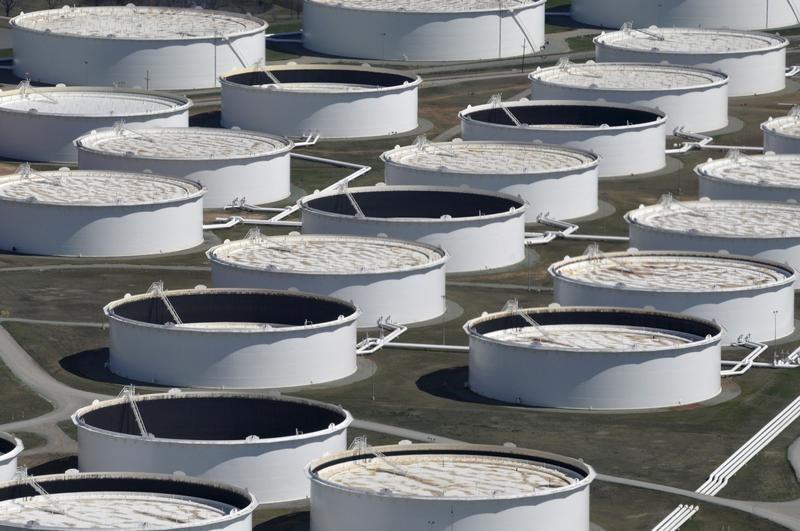By Scott DiSavino
NEW YORK (Reuters) - Oil prices slid to almost four-month lows on Wednesday, with Brent briefly falling below $50 a barrel, after data showed U.S. crude inventories rising faster than expected, piling pressure on OPEC to extend output cuts beyond June.
The U.S. Energy Information Administration (EIA) said U.S. inventories climbed almost 5 million barrels to 533.1 million last week, far outpacing forecasts of 2.8 million.
"A persistent increase in U.S. oil production, together with a rise in imports from Canada, contributed towards a large build in crude oil inventories," said Abhishek Kumar, senior energy analyst at Interfax Energy in London.
"The market remains nervous about rising U.S. production, which is also reducing the effectiveness of output cuts by the OPEC and some non-OPEC countries," Kumar added.
Global benchmark Brent (LCOc1) futures for May delivery were down 84 cents, or 1.7 percent, at $50.12 a barrel by 10:54 a.m. EDT (1454 GMT). The contract fell as low as $49.71.
On its first day as the front-month, U.S. West Texas Intermediate (WTI) crude (CLc1)
Both benchmarks hit their lowest since Nov. 30 when OPEC countries agreed to cut output, and both remained in technically oversold territory. WTI was oversold for the third day in a row, Brent for the second.
A deal between the Organization of the Petroleum Exporting Countries and some non-OPEC producers to reduce output by 1.8 million barrels per day (bpd) in the first half of 2017 has done little to reduce bulging global oil stockpiles.
OPEC, which sources say is leaning toward extending cuts, has broadly delivered on pledged reductions, but non-OPEC states have yet to cut fully in line with commitments.
"OPEC has used up most of its arsenal of verbal weapons to support the market. One hundred percent compliance by all is the only tool they have left and on that account they are struggling," said Ole Hansen, head of commodity strategy at Saxo Bank.
U.S. shale oil producers have been adding rigs, boosting the country's weekly oil production
"OPEC's market intervention has not yet resulted in significant visible inventory drawdowns, and the financial markets have lost patience," U.S. bank Jefferies said in a note.
But the bank said the market was undersupplied and, if OPEC extended cuts into the second half, inventories would draw down and prices recover above $60 in the fourth quarter.

However, it said U.S. crude production was expected to grow by 360,000 bpd in 2017 and 1 million bpd in 2018, and a price recovery could spur more U.S. shale activity.